
Numismatics During the Ancient Period
Category: History of Numismatics
8th century BCE - 5th century CE
Before the term “numismatics” was first coined, civilizations have long dealt with currency. Its origins can be traced as far back as the first ancient civilizations, predating the establishment of governments as we understand them today and continuing through different historical epochs.
Because the ancient period marks the birth and spread of currency usage, knowing the significant numismatic events from this time can help us appreciate how far currency has come and how much it has transformed to become what it is today.
The Introduction of Coins and Currency During the Ancient Period
Lydia
Lydia (or modern-day Turkey) is credited with producing the first official coins during the 7th century BCE. These early coins were made of a naturally occurring metal alloy made of gold and silver, called electrum. These electrum coins stand as a pivotal development in the evolution of currency, providing an easily recognizable form of currency that simplified trade and commerce.
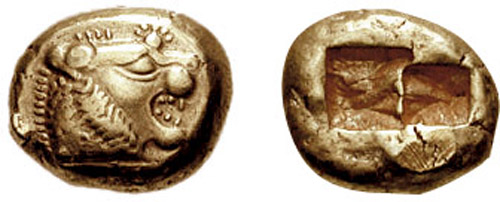
The Lydians are also believed to be the first civilization during the ancient period to use coins entirely made of gold or silver, stamping symbols and designs on one side. Often these symbols were geometric shapes, abstract images, or animal figures, and were used to indicate the coin’s authenticity and value.
Greece
After metal bars came another form of currency that predates coinage—the obeloi (or obol). These were metal spits that the ancient Greeks used in trade, but they also resembled the spits that were typically used for roasting. Six obol make a drachma, or a handful.
The word “obol” itself, however, also refers to the small silver coin used in Greece not long after spits were used in trade, which can sometimes cause confusion. The same is true of “drachma”, which was later used as a term for six silver coins instead of six spits.
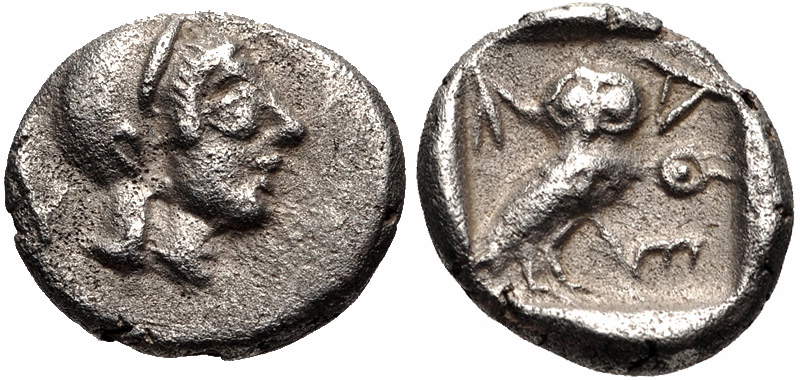
510-490 BC Silver Athenian Obol
Silver was mainly used in the production of coins throughout the Greek world, while gold was usually struck during emergencies and times of economic strain.
Since the city-states of Greece eventually became self-governing entities with their own government and culture, they also designed coins with symbols of their respective patrons, legendary figures, mythological creatures, and iconic structures.
This meant that there were likely dozens, if not hundreds, of different coins circulating within Greece during this ancient period. And it created a complex and diverse monetary landscape that would fascinate archaeologists and numismatists to this day.
Ancient Period China
Before coinage, the Chinese used cowry shells as an early form of currency, especially in Central China. In fact, one of the first coins produced in China, the “tong bei”, would still resemble cowry shells but were instead molded from bronze.
Around the end of the Shang dynasty (1200 BCE), other currency shapes emerged, such as spades (used by the Zhou, Wei, Han, and Qin dynasty) and knife-shaped “coins” (used by the Qi dynasty).
Eventually, a uniform bronze coin was introduced as part of the Unification of China, the “ban liang” coins. These coins had a characteristic hole in the middle, which allowed the Chinese to string them together for easier handling.
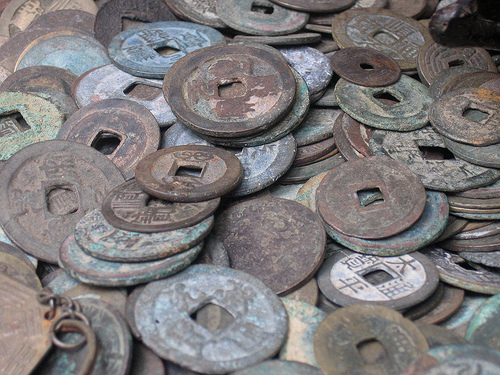
Ancient Egypt
The Egyptians traded using livestock, grains, and textiles as a form of proto-currency before the introduction of coinage. They would used gold and metal rings as a medium of exchange after precious metals became popular for trading.
The Ptolemaic dynasty of ancient period Greece had a significant influence on Egypt’s economy and its currency. The Hellenistic culture brought Greek inscriptions, symbols, and artistic styles to Egypt’s coinage. And combined with Egypt’s wealth and resources, these Ptolemaic coins facilitated trade and economic prosperity for both the Greek and Egyptian empires.
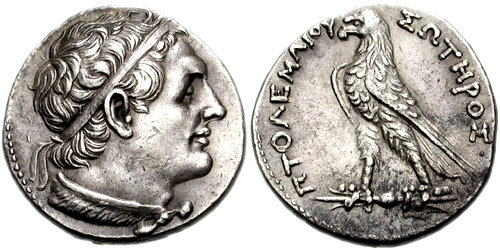
Golden Age of India
Before coins, cowry shells were also used as commodity money in India. And it wasn’t until around the 1st millennium BCE to the 6th century BCE that coinage was introduced.
The Gupta period is quite important to many coin collectors since it marked the “Golden Age'' of India, and the production of one of the most iconic coins of the ancient period.
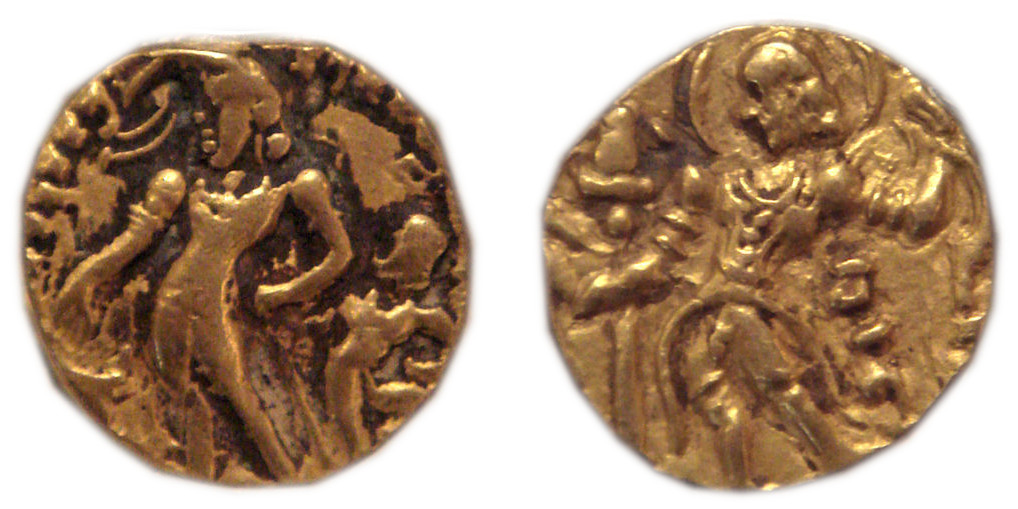
These beautifully crafted gold coins called dinars were prized not only for their monetary value, but also for the extraordinary appeal of the different parts of the coin, such as the engraved figures and shapes. Traders, merchants, and collectors were drawn to India’s beautiful coinage, enhancing the country’s reputation as an economic powerhouse and a center for culture and art.
Ancient Period Rome
Ancient Rome holds immense significance in the history of numismatics. The word money itself is derived from the Roman goddess, Juno Moneta, who was worshiped as a deity for financial matters and an overseer of the minting process.
The Temple of Juno Moneta, located on the Capitoline Hill in Rome, served both as a place of worship and as a minting workshop where Roman coins were produced. And it is from this temple that the English word “mint” is derived.
While the Greeks mainly used silver during the early stages of coinage, the Romans favored bronze. We may trace this decision from the pre-coinage period of the Roman empire when they were using “Aes Rude” — chunks of bronze weights with one unit weighing approximately 320 grams.
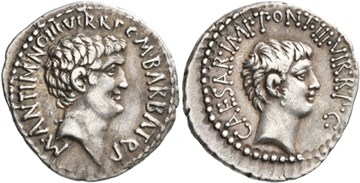
The Roman monetary system evolved over time, influenced by neighboring civilizations such as Greece and Egypt. In numismatics, one can say that Rome, along with Greece, popularized the portrayal of leaders on currency. The silver denarius and gold aureus coins of Rome, for instance, were central tools of propaganda, often reflecting the economic and political changes of the Roman Republic and Empire.
Image attributions:
Lydian Electrum Coin: By Classical Numismatic Group, Inc. http://www.cngcoins.com, CC BY-SA 3.0, https://commons.wikimedia.org/w/index.php?curid=547604
510-490 BC Silver Athenian Obol: By Classical Numismatic Group, Inc. http://www.cngcoins.com, CC BY-SA 3.0, https://commons.wikimedia.org/w/index.php?curid=29551210
Ancient Period Chinese Coins: By mc559 - Chinese coins, CC BY-SA 2.0, https://commons.wikimedia.org/w/index.php?curid=2409098
Silver Tetradrachm of Ptolemy IV Philopator: By Classical Numismatic Group, Inc. http://www.cngcoins.com, CC BY-SA 3.0, https://commons.wikimedia.org/w/index.php?curid=56490764
Chandragupta II gold coins of the Gupta Empire, 400 CE: By No machine-readable author provided. World Imaging assumed (based on copyright claims). - No machine-readable source provided. Own work assumed (based on copyright claims)., Public Domain, https://commons.wikimedia.org/w/index.php?curid=1286330
Denarius of Octavian and Mark Antony: By Byzantium565 - Own work, CC BY-SA 4.0, https://commons.wikimedia.org/w/index.php?curid=112623925



